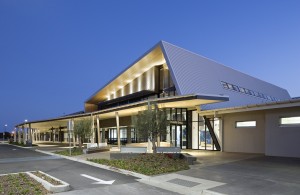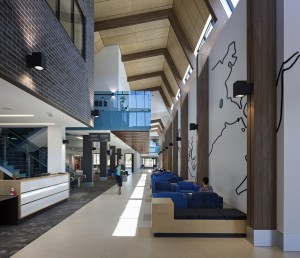Australia’s first digital hospital powers up at Hervey Bay
THE FIRST hospital in Australia to offer fully integrated, digital e-health capability was opened to service Queensland’s Hervey Bay area in December.
St Stephen’s Private Hospital, operated by UnitingCare Health in Hervey Bay, has been created by expanding the regional hospital with a new, three storey inpatient hospital with 96 acute care inpatient beds and three additional operating theatres. 
The hospital’s digital features include patient, community and medical web portals, and information linkages with Hervey Bay Public Hospital, medical practitioners, other UnitingCare Health hospitals, universities and diagnostic providers.
The patient-centred clinical systems include automatic record feed, automated care pathways, alerts, and medication management.
The Federal Government has provided special authorisation under Section 100 of the National Health Act 1953, to enable St Stephen’s to undertake a ‘Paperless Prescribing, Dispensing and Claiming Trial’. Instead of paper scripts, all medication transactions will be done electronically.
Federal Health Minister Peter Dutton said St Stephen’s was a world class hospital which showcased the future of health care. 
“St Stephen’s has raised the bar for all healthcare providers by embracing the technology literally before the foundations were laid,” Mr Dutton said.
“It will be a showcase for the improvements that e-health information technology can make for health care and patient outcomes.
“Digital technology can make health care far more efficient and more effective for patients and providers.
“Given the demands on our health system – from an ageing population, rising levels of chronic disease and ever-rising consumer expectations – creating new efficiencies is essential.”
Federal Member for Hinkler, Keith Pitt said having the first fully digital hospital in Hervey Bay was a huge benefit to the people in the Hinkler electorate.
“State-of-the-art facilities such as these enable regional people to stay close to home when ill or injured,” Mr Pitt said.
“This facility will create new jobs and attract medical specialists to our community.”
The Australian Government provided $25.9 million for the construction of the new hospital building and $21.2 million to equip the expanded hospital with state of the art eHealth technology.
“My department will continue to work with St Stephen’s to monitor the effectiveness of the electronic system, and pick up on the benefits to inform future changes,” Mr Dutton said.
“We will use the lessons learned from St Stephen’s paperless prescribing, dispensing and claiming trial to refine the hospital electronic medication chart, which will soon be in widespread use in Australian hospitals.”
Electronic medication charts will start to be introduced in private and public hospitals this financial year (2014-15).
“This is a great example of the major contribution that private providers, including not-for-profit operators, make to our health care system,” Mr Dutton said.
Wood & Grieve Engineers (WGE) were contracted to provide electrical, mechanical, and vertical transportation services at St Stephen’s including critical engineering systems such as power supply and air conditioning.
A WGE spokesperson said, “Digital technology is seen as the future of healthcare – patient health records and results are updated and accessible on tablets and mobile devices throughout the hospital, personalised food and medication can be managed electronically and practitioners can log in at any time to see what a patient is doing in real time without the need for chasing paper charts throughout the system.
The technology-focussed St Stephen’s project necessitated an innovative approach to engineering. According to WGE’s electrical section manager, Ashley Holm, the biggest challenge was “to come up with an engineering design that was resilient, reliable and user friendly”.
He said reliability and practicality were key drivers of the project’s success. The on-site data centre and air conditioning systems required particular attention as full functionality was essential even during power supply outages.
The entirely digital hospital design used over 300km of fibre optic cable. To ensure system resilience, WGE provided full redundancy in the fibre optic cabling and ICT power infrastructure to minimise downtime and future proof the facility. 
“Close and continuous engagement with the e-health designers as well as the client’s operational team helped us to realise an effective design solution that will serve the hospital well for the life of the facility,” Mr Holm said.
“Being part of a digital hospital design team was a fantastic opportunity to work with a multitude of stakeholders from different backgrounds. The collective goal of delivering Australia’s first digital hospital really gave the team a tremendous incentive and helped to foster a collaborative project environment.”
ends

